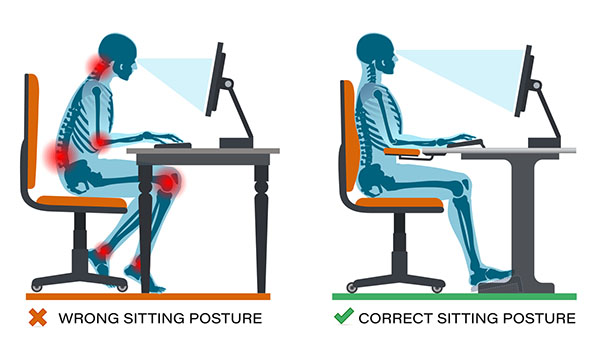You ever find yourself squinting at a growth chart in a pediatrician’s office, wondering if your kid’s right where they “should” be—or if something’s off? You’re not alone. A lot of parents start Googling things like “average height for 4 year old” or “child height chart age 4” right around preschool age, and for good reason: this is when early childhood growth patterns either hold steady… or start showing little red flags.
Now, here’s the thing—I’ve seen so many well-meaning parents worry over half a centimeter, when really, it’s the pattern that matters. In my experience, pediatricians aren’t just looking at a single number. They’re tracking height-for-age percentiles, monitoring where your child falls on a WHO or CDC growth chart, and whether they’re sticking to their usual curve or veering off.
What I’ve found is that age 4 is kind of a checkpoint. A “growth pulse,” if you will. It’s not just about measuring centimeters or inches—it’s about understanding how your child stacks up against pediatric norms and what that says about their overall development.
So let’s break it down—what’s typical, what’s concerning, and what those percentile ranks actually mean for your 4-year-old.
Growth Percentiles: How Doctors Measure Height
Here’s something most parents don’t hear enough: being in the 50th percentile doesn’t mean your child is “average” in a bad way—it means they’re right where half the kids are. And that’s actually a solid place to be. But, you see, percentile charts aren’t really about ranking kids (though I know it can feel that way). They’re about tracking patterns—watching how your child grows compared to a reference population established by the WHO Child Growth Standards or your local health authority.
In a pediatric assessment, doctors don’t just glance at one height. They’re following a percentile curve over time, looking for abnormal variance—like sudden drops or jumps. For example, if your 4-year-old was sitting steadily around the 60th percentile and suddenly dips to the 15th, that might raise some flags. On the flip side, a kid consistently in the 5th percentile can be perfectly healthy if that’s their usual curve. (That’s where z-scores come in—but that’s a deeper rabbit hole.)
What I’ve learned is this: growth monitoring is about consistency, not comparison. So if you’re staring at your child’s 4-year-old height chart and wondering if they’re “too short” or “too tall,” the better question is: are they growing steadily?
And if you’re unsure—always loop in your pediatrician. They’re trained to spot real deviations before they become real problems.

Metric vs. Imperial: Height Conversions for 4-Year-Olds
You’d think something as simple as measuring height would be… well, simple. But then you’ve got centimeters on one chart, inches on another, and suddenly you’re deep in a Google rabbit hole trying to figure out if your 4-year-old is actually tall or just tall in metric. Sound familiar?
In the U.S., most pediatricians still default to inches—so when they say your child is 40 inches tall, it sounds straightforward. But flip that over to the metric system used in most of the world, and you’re looking at 101.6 cm. Same height, different flavor. And for parents following international standards—especially WHO growth charts—knowing both units helps. Trust me, it saves a lot of second-guessing.
What I’ve found is that using a height converter becomes second nature once you’ve done it a few times. A quick trick? Multiply inches by 2.54 for centimeters. Or if you’re going the other way, divide by 2.54. (I keep a sticky note with both on my fridge. No shame.)
Factors Affecting a 4-Year-Old’s Height
If you’ve ever caught yourself wondering, “Why is my 4-year-old so much shorter (or taller) than the kids at daycare?”—you’re not overthinking it. Height at this age can vary a lot, and honestly, it’s not just about DNA. What I’ve found over the years is that it’s usually a mix of things, some predictable, some surprising.
Here’s what tends to make the biggest difference:
- Genetics – This one’s obvious, right? If both parents are tall, there’s a decent chance their child will be too. But even then, I’ve seen short parents with tall kids (and vice versa). So, heredity gives us a blueprint—but not a fixed outcome.
- Nutrition – You see, food isn’t just fuel—it’s building material. Kids need protein, calcium, iron, and all the little micronutrients to support proper growth. Skimp here for too long, and yeah, you might see signs of stunted growth creeping in.
- Sleep – Growth hormones are mostly released at night, during deep sleep. If a kid isn’t sleeping well (or enough), it can throw things off. I underestimated this early on with my own son—learned that lesson the hard way.
- Physical Activity – Movement encourages healthy bone development and circulation. Even just running around the playground helps more than most people think.
- Chronic Illness or Stress – Less common, but important. Ongoing health issues, especially ones affecting digestion or metabolism, can seriously impact height over time.
Now, I don’t say any of this to stress you out. What I’ve learned is that height is a slow story, not a single snapshot. So if you’re concerned, track progress, look at trends—not just numbers.

How Height Varies by Country and Ethnicity
If you’ve ever compared a group of 4-year-olds from different parts of the world, you’ve probably noticed something interesting — they don’t all grow the same way. According to the latest WHO Growth Standards (as of June 2025), the global average height at age 4 sits around 100 cm for boys and slightly under that for girls. But that’s just the average. In places like the Netherlands, it’s not unusual for 4-year-olds to push past 104 cm, while in parts of Southeast Asia, kids the same age might hover closer to 96–97 cm. The gap? It’s not just genetics. Nutrition patterns, cultural expectations, and even environmental stressors all play a role.
This kind of variation isn’t random — it’s patterned, and frankly, predictable if you know what to look for. Ethnic height norms tell us a lot. For instance, African American children often grow quickly during early childhood, sometimes outpacing peers in height by age 3 or 4, before leveling out. Meanwhile, East Asian children may grow more gradually early on, then hit a growth spurt later — especially during the teen years. If you’re looking at regional height differences and trying to figure out what’s “normal,” remember: normal depends on the map you’re standing on.
What to Know About Child Growth by Country
- Northern Europe: High protein intake, stable healthcare systems, and taller genetic baselines. Kids here often exceed global growth curves.
- South Asia: Lower average heights due to undernutrition and limited access to pediatric care, despite having no inherent genetic disadvantage.
- Central Africa: Great early growth potential, but progress can be disrupted by inconsistent food access and infectious disease rates.
🧠 Here’s something most people miss: In countries like Guatemala, a 4-year-old might stand 8–10 cm shorter than a child in Norway — and it’s not because of their genes. It’s long-term nutritional gaps that slow things down.
So, what can you do with this info? If you’re tracking your kid’s height or managing growth patterns in a clinical setting, don’t just rely on global stats. Tap into ethnic growth curves and regional growth data that reflect the real-world context your child lives in. It gives you a more accurate sense of whether they’re thriving or falling behind — and whether it’s time to take action, before it becomes a long-term issue.

When Height is a Concern: Signs of Growth Delays
I’ll be honest—most of the time, a child’s growth will sort itself out. But there are moments when your gut says, “This doesn’t feel right,” and you’re probably right to pause and look closer.
Now, not every short 4-year-old needs a medical workup. But in my experience, there are some clear red flags worth paying attention to:
- No measurable growth over 6 months to a year – Growth should be slow and steady, not stalled. If their shoes still fit after a whole year, that’s not always a great sign.
- Falling off their growth curve – Kids don’t need to be in the 90th percentile, but they should stay close to their usual percentile band. A sudden drop can be a big clue.
- Visible developmental delays – Not just height, but things like energy levels, motor skills, or delayed skeletal maturity can all point to something deeper.
- Chronic health issues – Recurrent infections, digestive problems, or poor appetite can impact growth long before it shows on the chart.
If any of these ring true, it might be time to ask for a pediatric evaluation or even a referral to an endocrinologist. Conditions like growth hormone deficiency, hypothyroidism, or even early signs of dwarfism often get caught here—not through panic, but through careful, consistent screening.
Here’s what I’ve learned: it’s not about chasing height, it’s about catching patterns that don’t fit. And the earlier, the better.

When Height Is a Concern: Signs of Growth Delays
So, when should you start to worry about your 4-year-old’s height? That’s the question most parents aren’t totally sure how to answer—and I get it. Some kids hit growth spurts late. Others shoot up early and plateau. But in my experience, there are a few red flags that shouldn’t be ignored.
What I’ve found is that it’s less about being short and more about not growing consistently over time. If your child hasn’t gained height in six months or more, or they’ve suddenly dropped off their growth curve (say, from the 50th percentile down to the 10th), that’s worth checking out.
Here are a few common warning signs:
- No noticeable height gain for 6+ months
- Clothes still fit from last year (cute, but not great)
- “Short stature” flagged during a pediatric evaluation
- Delayed development in other areas—like dental growth or motor skills
- A family history of endocrine issues or growth hormone deficiency
In those cases, a referral to a pediatric endocrinologist might be needed. They’ll dig into growth hormone levels, skeletal maturity, and possible underlying causes—like chronic illness, malabsorption, or even rare conditions like dwarfism.
Now, here’s what really matters: You don’t have to panic—just pay attention. What I’ve learned is that early screening makes a world of difference. If something’s off, catching it early gives your child the best shot at getting back on track.
Supporting Healthy Growth at Age 4
Here’s the thing—at age 4, your child’s growth isn’t just “happening.” It’s being built every single day by what they eat, how they sleep, and how much they move. I think a lot of parents (me included, at one point) assume growth is mostly genetic and just sort of unfolds on autopilot. But what I’ve found is that healthy height development takes real, daily support.
Here’s what actually helps:
- Nutrition that fuels growth
Foods rich in vitamin D, calcium, iron, and protein are essential for bone health and cell repair. Think: yogurt, eggs, leafy greens, lentils, and salmon. I try to sneak these into smoothies and soups—they don’t always notice 😉 - Solid sleep routines
Growth hormone peaks during deep sleep. If your 4-year-old is skipping naps but not getting a good 10–12 hours at night, it could be slowing things down. (We learned that the hard way after a stretch of midnight wakeups.) - Active play, daily
Kids don’t need gym memberships—they need playgrounds, trampolines, dance parties, and time to move. Physical activity keeps bones strong and helps regulate hormones related to growth.
What works? Keeping things consistent—but not rigid. The goal isn’t perfection. It’s giving your kid’s body what it needs to do its job. That’s how you help them grow.
Height and BMI: Understanding Proportion in 4-Year-Olds
You know what throws a lot of parents off? When their kid is technically within the “normal” range for both height and weight—but something still feels… off. Maybe they’re on the taller side but don’t look particularly lean. Or they’re petite but have a rounder middle. That’s where BMI for 4-year-olds comes in—not to label kids, but to assess proportionate growth.
In early childhood, doctors don’t just look at height and weight separately—they look at the height-to-weight ratio, usually through a pediatric BMI calculator. It’s a quick way to check if your child is growing in balance. Too far above the healthy range? Could signal early obesity risk. Too far below? Might point to nutritional gaps or underlying health concerns.
Now, here’s the tricky part: BMI in kids works differently than in adults. It’s age- and sex-specific, based on growth percentiles, not static numbers. (I’ve had to explain this more times than I can count.) That’s why you’ll sometimes hear terms like “underweight,” “healthy weight,” or “overweight”—but those are based on child-specific growth charts, not adult standards.
What I’ve learned? Don’t panic over a single BMI number. Use it as one piece of the puzzle. It’s the trend that matters. Keep tracking, stay curious, and when in doubt—ask your pediatrician to walk you through it. It’s what they’re there for.
Comparing Height Around the World
Here’s a question I’ve heard more than once: “Is my 4-year-old short—or just short compared to kids here?” And honestly, it’s a good one. Because average height at age 4 isn’t a one-size-fits-all number—it varies a lot depending on where you live, how your child eats, and even the air they breathe. I’m not kidding.
The WHO and UNICEF have been tracking global height data for decades, and what I’ve found is that regional averages often reflect deeper stories—nutrition, socioeconomic status, healthcare access—not just genes. Here’s a quick snapshot:
| Country/Region | Average Height (4-Year-Olds) |
|---|---|
| Netherlands | 105.3 cm (41.5 in) |
| USA | 102.5 cm (40.4 in) |
| South Korea | 101.8 cm (40.0 in) |
| Brazil | 99.9 cm (39.3 in) |
| India | 96.5 cm (38.0 in) |
| Ethiopia | 95.2 cm (37.5 in) |
You see the difference? That 10 cm gap between the Netherlands and Ethiopia isn’t just random—it’s often tied to chronic undernutrition or limited access to healthcare in early childhood.
Hi there! My name is Erika Gina, and I am the author of Choose Supplement, a website dedicated to helping people achieve their height goals naturally and effectively. With over 10 years of experience as a height increase expert, I have helped countless individuals increase their height through diet, exercise, and lifestyle changes.
My passion for this field stems from my own struggles with being short, and I am committed to sharing my knowledge and experience to help others overcome similar challenges. On my website, you will find a wealth of information and resources, including tips, exercises, and product reviews, all designed to help you grow taller and improve your confidence and overall well-being. I am excited to be a part of your height journey and look forward to supporting you every step of the way.
Name: Erika Gina
Address: 2949 Virtual Way, Vancouver, BC V5M 4X3, Canada
Email: [email protected]

